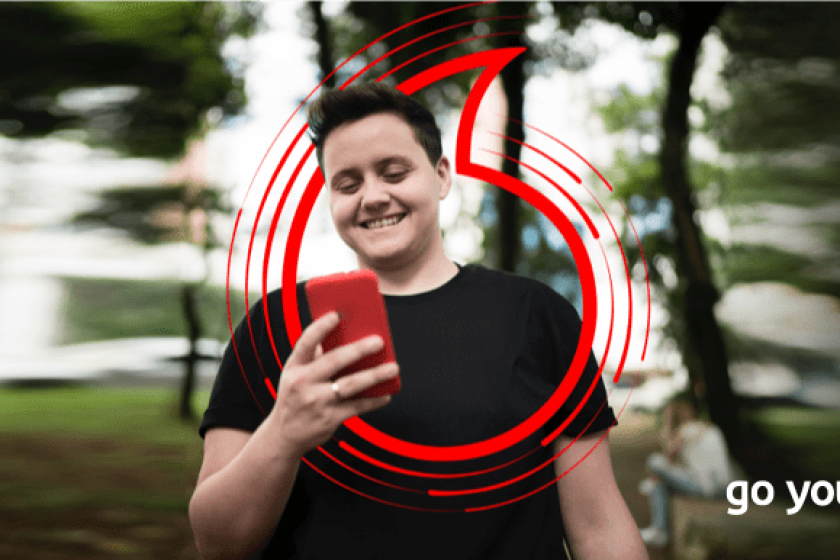With Kiwis spending more time online due to the COVID-19 lockdown, we’ve seen a lot of questions asked on social media about Vodafone’s internet services.
Many of us in Aotearoa will be asking ourselves if we have the best connection for our needs during this time, so it’s helpful to have an understanding of how the different networks function to make the right choices for you and your whānau.
What’s the difference between fixed and wireless broadband?
There are three main types of internet connections.
- A fixed broadband connection is either a fibre or copper line, a cable into your home that provides broadband and phone services over an Ethernet cable or Wi-Fi connection.
- A mobile network uses cell sites equipped with 2G, 3G, 4G and/or 5G technology to deliver a moveable internet connection to your smartphone. It can also deliver fixed wireless connection to a modem in your home, small business or building – and we’re seeing people at construction sites finding fixed wireless broadband particularly useful.
- If you’re in the city, a clear line of sight from the top of the cell site helps to get service. Trees, mountains and other land features can block signals.
- In rural areas, we use long-range radio spectrum that can travel up to 35kms to connect homes in the area, mostly via 4G. Usually this has more than enough capacity to service country communities, but at peak times these sites are more likely to get congested.
- There is an exception, as people who live in very remote areas may have satellite connections, with internet delivered via a satellite.
If you think about the internet like a road, in Aotearoa we have highways, one-way streets and sometimes there are gravel roads in the country.
Each road will get your car to its destination, but some highways can be faster or carry more cars, depending on how it’s built and how many lanes (or ‘capacity’ in internet terms). The internet is the same.

What’s the difference between wholesalers and retailers?
The telco industry has lots of companies working together to keep you connected. We work with many of them at Vodafone, and we’re often referred to as an Internet Service Provider (ISP).
Vodafone is one of around 80 Retail Service Providers (RSP) in New Zealand who sell broadband internet plans to customers across the country, as well as provide mobile connectivity and fixed wireless services.
A wholesaler is a company like Chorus – or one of the other Local Fibre Companies (LFCs): Northpower Fibre, Ultrafast Fibre or Enable. They have built the fibre network across the country.
If you’re a Vodafone fibre customer, we’re working with Chorus or another LFC to keep you online – and we pass up to 50% of your broadband plan’s cost on to an LFC to pay for the wholesale cost of fibre.
How do mobile networks work?
All around our cities, you might notice lampposts or cell sites that send mobile signals to and from your phone via radio waves.
In the early 2000s, five cell sites were enough to service all of Tāmaki Makaurau, Auckland – but 20 years on, we need hundreds of cell towers around 1-2kms apart to keep up with the demand as more people rely on their smartphones.
We now have around 1,600 cell towers across Aotearoa, and will be building more to keep you connected – especially in rural areas.
Over the years, we’ve made huge investments in upgrading our infrastructure. We’ve significantly upgraded rural connectivity and evolved our networks from 2G, 3G to 4G and now 5G.
As part of an industry collaboration, we also work with the Rural Connectivity Group (RCG), along with Spark and 2Degrees, to build joint cell sites in rural areas to keep people in the country connected via the Rural Broadband Initiative (RBI1 and RBI2).
How can I manage my data allowance more efficiently?
If you want your data to last the distance, there are lots of easy things you can do to ensure you’re using your data efficiently and effectively.
- You can keep an eye on data usage by using the MyVodafone app.
- Check what devices are connected to your Wi-Fi and turn off any you don’t need.
- Try closing down apps on your phone when it’s connected to Wi-Fi so they don’t keep using data in the background.
- Save large file downloads until you’re connected to free Wi-Fi or download at a time when we’re offering unlimited data.
If you want to learn more about how New Zealand’s networks work, visit the Telecommunications Forum’s website for more info, including this helpful article: How to ensure you have the best connection during the Covid-19 lockdown.
We want you to stay well, stay safe and stay in touch. Kia haumaru te noho, kia kaha Aotearoa.



